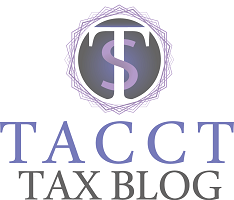
Year-end tax planning could be especially productive this year because timely action could nail down a host of tax breaks won’t be around next year unless Congress acts to extend them.
Businesses and individuals can potentially achieve significant tax savings by taking advantage of tax provisions that are in place this year, but are scheduled to expire on December 31, 2013.
The year-end tax planning tips highlight unique opportunities and challenges faced by taxpayers in today’s uncertain legislative environment. It includes two checklists of actions that can cut taxes for taxpayers for this year and in the years to come—one that describes actions individuals can take to save taxes and one that describes actions businesses and business owners can take to save taxes.
TAX BREAKS THAT EXPIRE AT THE END OF 2013
- For businesses, tax breaks expiring at the end of this year include: 50% bonus first-year depreciation; a $500,000 cap on Code Sec. 179 expensing with a $2 million investment-based phase-out; claiming up to $250,000 of expensing (within the overall dollar cap) for qualified real property; and a tax credit for qualifying research expenses.
- For individuals, tax breaks expiring at the end of this year include: the option to deduct state and local sales and use taxes instead of state and local income taxes; tax-free distributions by those age 70-1/2 or older from IRAs for charitable purposes; and a tax credit for energy-saving home improvements. Also, individuals who buy qualified small business stock before January 1, 2014 will be able to exclude 100% of the gain on the sale if they hold the stock for more than five years.
CHECKLIST OF PLANNING MOVES FOR INDIVIDUALS
- It may be advantageous to try to arrange with your employer to defer a bonus that may be coming your way until 2014.
- If you expect to owe state and local income taxes when you file your return next year, consider asking your employer to increase withholding of state and local taxes (or pay estimated tax payments of state and local taxes) before year-end to pull the deduction of those taxes into 2013 if doing so won’t create an alternative minimum tax (AMT) problem.
- If you have already reached the 7.5% (over 65 years old) or 10% (everyone else) medical deduction threshold, see if you have any bills due in the New Year that could be paid before year end to increase your medical deduction in a year when you might actually get one!
- Accelerate big ticket purchases into 2013 in order to assure a deduction for sales taxes on the purchases if you will elect to claim a state and local general sales tax deduction instead of a state and local income tax deduction. Unless Congress acts, this election won’t be available after 2013.
- If you are a homeowner, make energy-saving improvements to the residence, such as putting in extra insulation or installing energy saving windows, or an energy efficient heater or air conditioner. You may qualify for a tax credit if the assets are installed in your home before 2014.
- Unless Congress extends it, the up-to-$4,000 above-the-line deduction for qualified higher education expenses will not be available after 2013. Thus, consider prepaying eligible expenses if doing so will increase your deduction for qualified higher education expenses. Generally, the deduction is allowed for qualified education expenses paid in 2013 in connection with enrollment at an institution of higher education during 2013 or for an academic period beginning in 2013 or in the first 3 months of 2014.
- You may want to pay contested taxes to be able to deduct them this year while continuing to contest them next year.
- You may want to settle an insurance or damage claim in order to maximize your casualty loss deduction this year.
- For those who have stocks that they are contemplating selling, make sure that you look at the timing of the sale and when would be the opportune time to do so. Selling stocks at a loss this year could reduce this year’s tax liability but if you are planning to sell stock in the next year with a gain it may be better to wait and sell then.
Prepay the following expenses:
- January’s mortgage payment for the interest deduction
- Pay fourth quarter state taxes in December (for those not subject to AMT)
- Prepay property taxes
- Prepay winter term college tuition (as long as it is for courses starting during the first three months of the New Year and you have not already reached the maximum amount for the year)
Make an initial or additional contribution to the following:
- Contribution to an IRA(can be done until April 15th, 2014)
- If you are funding a 529 plan make a contribution to reduce taxable income on your state return. (Could be allowed up to April 15th, 2014 – check your state law)
CHECKLIST OF PLANNING MOVES FOR BUSINESSES & BUSINESS OWNERS
- Businesses should consider making expenditures that qualify for the business property expensing option. For tax years beginning in 2013, the expensing limit is $500,000 and the investment ceiling limit is $2,000,000. And a limited amount of expensing may be claimed for qualified real property. However, unless Congress changes the rules, for tax years beginning in 2014, the dollar limit will drop to $25,000, the beginning-of-phase-out amount will drop to $200,000, and expensing won’t be available for qualified real property. The generous dollar ceilings that apply this year mean that many small and medium sized businesses that make timely purchases will be able to currently deduct most if not all their outlays for machinery and equipment. What’s more, the expensing deduction is not prorated for the time that the asset is in service during the year. This opens up significant year-end planning opportunities.
- Businesses also should consider making expenditures that qualify for 50% bonus first year depreciation if bought and placed in service this year. This bonus write-off generally won’t be available next year unless Congress acts to extend it. Thus, enterprises planning to purchase new depreciable property this year or the next should try to accelerate their buying plans, if doing so makes sound business sense.
- Nail down a work opportunity tax credit (WOTC) by hiring qualifying workers (such as certain veterans) before the end of 2013. Under current law, the WOTC won’t be available for workers hired after this year.
- Make qualified research expenses before the end of 2013 to claim a research credit, which won’t be available for post-2013 expenditures unless Congress extends the credit.
- If you are self-employed and haven’t done so yet, set up a self-employed retirement plan.
- Depending on your particular situation, you may also want to consider deferring a debt-cancellation event until 2014, and disposing of a passive activity to allow you to deduct suspended losses.
- If you own an interest in a partnership or S corporation you may need to increase your basis in the entity so you can deduct a loss from it for this year.
A WORD OF CAUTION
As always, year-end tax planning doesn’t occur in a vacuum. It must take into account each taxpayer’s particular situation and planning goals, with the aim of minimizing taxes to the greatest extent possible. While many taxpayers will come out ahead by following the traditional approach of for deferring income and accelerating expenses, others, including those with special circumstances, should consider their options carefully. In such situations, taxpayer should keep in mind that most traditional techniques for deferring income and accelerating expenses can be reversed to achieve the opposite effect.



